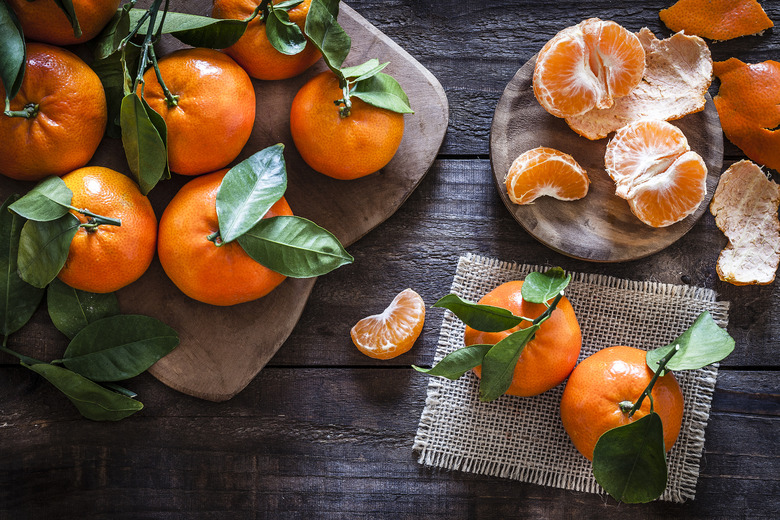Tangerines, Clementines, And Mandarins: What's The Difference?
Tangerines, clementines, mandarins, satsumas, not to mention "cuties" and "sweeties" — there are so many names used to describe small, round, orange citrus fruits. But which is which, what are the differences, and how can you tell them all apart?
Fear not, kind readers: There are answers to all these niggling questions, and things shall soon be clear as day.
Mandarins are a kind of orange — the mandarin is actually the original ancestor of all other oranges. They are flatter on both ends than the typical sweet orange, and easy to peel. Is this sounding familiar? It should! The term mandarin in used interchangeably with the term tangerine in the Unites States, and for good reason — those thin-skinned tangerines are a type of mandarin! That's right: Tangerines, with their bright orange, slightly mottled, pebbly skin (that is a bit tougher than a clementine's) and their sweet-tart flavor, are one of the larger members of the mandarin family.
Clementines are also a kind of mandarin, though they are the smallest member of the family, adored for their sweet and seedless segments and smooth, deep orange, glossy peel. If you have ever purchased a net bag of "cuties" or "sweeties," you have, in fact, bought a bag of clementines along with some charming marketing.
Satsumas are yet another kind of mandarin orange, originating in Japan. They are the smallest, most tender and sweetest variety and are also the easiest kind to peel. Because they are so small and tender, they are also the most fragile kind of mandarin, which means they might be harder to find in supermarkets. If you are on the hunt for some seriously good citrus, you may want to start your search at one of America's best supermarkets for 2018.
